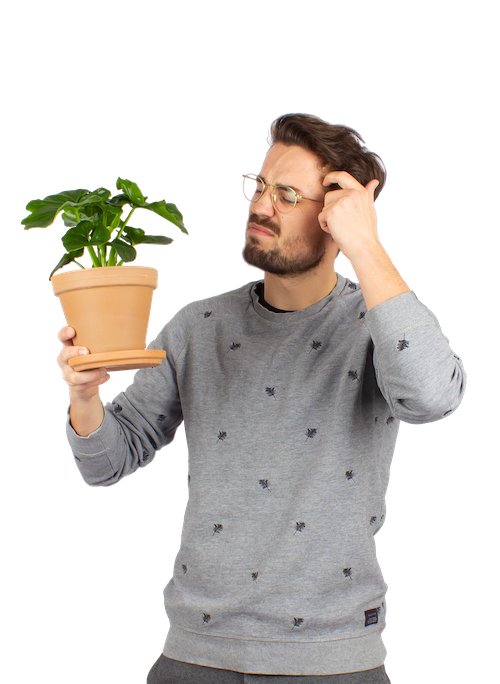We wet our plants, and so should you! Watering your plants may seem simple, but mastering the art of proper hydration is crucial for your amigos’ health and vitality. Here, we'll explore various techniques for checking soil moisture levels and watering indoor plants effectively, taking into account different pot types and plant needs! Grab your watering cans and let's dive in.
Checking Soil Moisture
Finger Test: Simply insert your finger about an inch or two into the soil to assess its moisture level.
Stick Test: For a deeper check, use a small stick or chopstick to probe the soil. If the stick comes out dry and clean, it indicates dry soil throughout, whereas soil sticking to the stick indicates moisture.
Moisture Meter: Invest in a moisture meter probe to get an accurate reading of the soil's moisture content at different depths.
Weight Test: Lift the pot! A lighter pot suggests dry soil, while a heavier one indicates moisture. Over time, you'll become more familiar with your plant's weight when dry versus when watered, making this method a bit easier.
Watering Techniques for Indoor Plants
Above: Water directly onto the soil surface, avoiding the foliage to prevent fungal diseases. Though a popular method, especially for easy-care amigos like Dracaenas and Cacti, it can sometimes lead to pockets of dry soil and uneven moisture distribution. Be sure to water evenly when top watering!
Bottom Watering: Place the pot in a tub or bowl filled with water to a few inches below the top of the pot, and allow the plant to soak up moisture from the bottom. When it stops taking in water and the soil feels evenly watered, usually after about 30-40 minutes, it’s good to go! This method is popular for plants that prefer consistently moist soil like Peace Lilies, Philodendrons, and Ferns, or plants that have suffered from under watering and need a good soak.
Misting: Use a spray bottle to mist the foliage, especially for humidity-loving plants like Calatheas, Crotons, and Pothos. This is also the way to lightly water a Terrarium!
Considering Pot Types
When it comes to choosing pots for your plants, consider their drainage capabilities. Consider pots with drainage holes to ensure proper water drainage, preventing issues like waterlogging and root rot. We like to keep our amigos in their grower’s pots with drainage, and pop that right into the decorative pot for easy removal and watering!
For pots without drainage holes, be cautious with watering, as excess water can accumulate at the bottom, posing a risk to your plant's health. Be sure to keep a closer eye on your plant’s response to your watering routine when using a pot without drainage! Common signs of overwatering include yellowing leaves, mushy stems, and fungal issues like leaf spot. If you think your plant is showing signs of root rot, it’s probably time for a repot into some fresh soil.
Get Watering!
Remember to adjust your watering routine based on the seasons; in winter, reduce watering frequency as plants enter dormancy, while in spring and summer, increase watering to accommodate higher growth and evaporation rates. Every plant is different, so spend some time getting to know your green amigo. They'll appreciate someone who cares!













